| Overview |
The Omnify Reporter provides a cost rollup report that allows you to view the cost of any Bill of Material (BOM).
When running a cost rollup, the Reporter will read all levels of the BOM hierarchy and perform a cost calculation on all items of a BOM.
The Cost Rollup will calculate the cost of all BOM items based on the extended quantities (parent item quantities).
|
 |
Launching the Cost Rollup |
Top |
|
You can launch the Cost Rollup from the Reporter Home Page using the BOM Reports pane in the navigator or the BOM Reports drop list.


You can also launch the Cost Rollup from the View drop list of the Parts List page on the Item form.

|
 |
Specifying a BOM Item |
Top |
|
When launching the Cost Rollup from the View drop list of the Parts List page on the Item form the Reporter will automatically specify the item and revision.


When launching the Cost Rollup from the Reporter Home Page using the BOM Reports pane in the navigator or the BOM Reports drop list,
the Cost Rollup form will be blank and you will need to specify the BOM part number and revision.


To set or change a BOM Part Number, you can type the part number in the BOM Part Number field or use the Browse button to select the part number.


Clicking the Browse button will invoke the Omnify Object Search form.
Using this form you can search and select the desired BOM item.
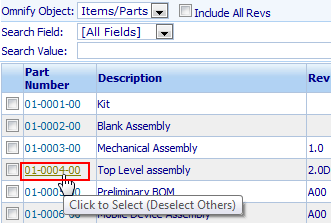
Once the BOM Part Number is specified, click the Load BOM button to list the revisions and display the active BOM.

You can change the revision by selecting the desired revision from the Rev drop list.

|
 |
Cost Fields |
Top |
|
Cost fields can be defined as any item attribute field.
Cost fields are selected in the Preferences dialog box.
To define the Cost Fields you wish to include in the list, select the Fields/Options button from the toolbar.

This will invoke the Preferences form and select the Cost Rollup tab.
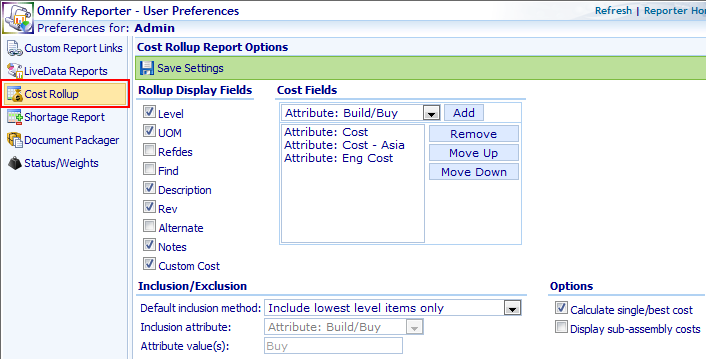
You can select which BOM fields are displayed by checking/unchecking the desired fields from the Rollup Display Fields list.
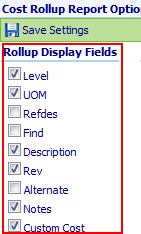
To set the calculated cost fields, select the field from the Cost Fields list and click the Add button.
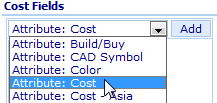

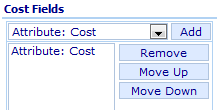
You can include as many cost fields as needed.
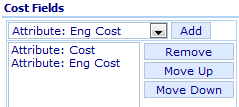
|
 |
Using the Cost Rollup |
Top |
|
The Cost Rollup provides 2 modes of cost analysis:
| Single/Multiple Cost Fields |
Report will calculate totals for each cost field (attribute) |
| Best Cost Field |
Report will calculate a single total by using the lowest cost from all of the cost fields (attributes) |
Note: Best Cost Field analysis will only be available when 2 or more cost fields are specified.
When Single/Multiple Cost Fields analysis is specified, the report will provide a summation for each cost field.
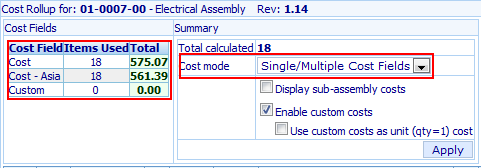
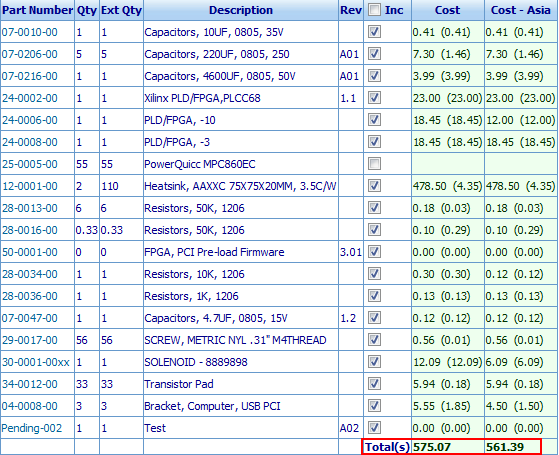
When Best Cost Field analysis is specified, the report will use the lowest cost from fields and provide a single total.

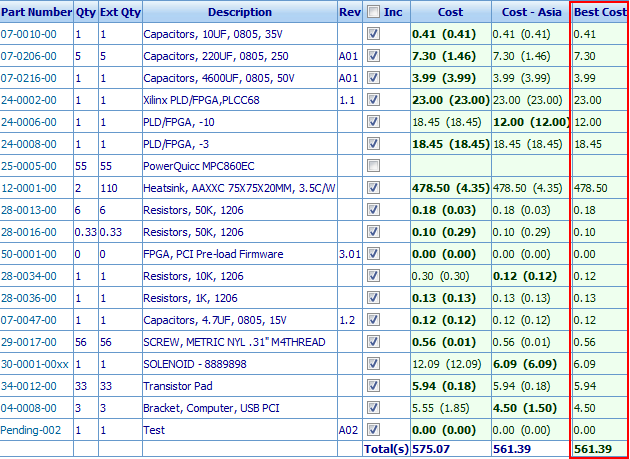
The report will display how many items from each field were used to determine the best cost.

The report will also display (in bold) which cost field was used for each item of the BOM.

You can display sub-assembly totals by checking the Display sub-assembly costs option and then clicking the Apply button.
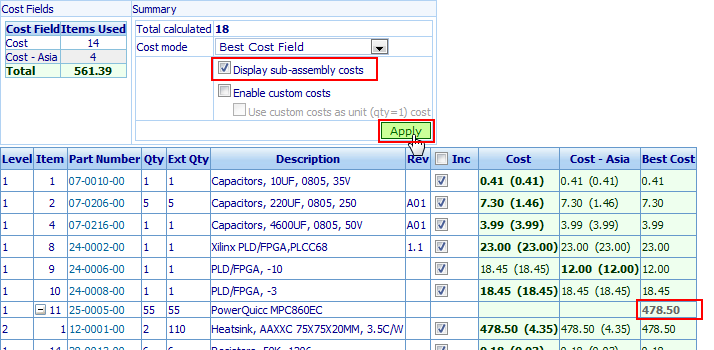
|
 |
Including/Excluding Items |
Top |
|
To include or exclude items, check or uncheck the Inc checkbox.
Note: remember to click the Refresh Totals button to apply the settings.

You can configure the system to automatically include/exclude items based on the item properties.
To setup automatic inclusion/exclusion rules, select the Fields/Options button from the toolbar.

The Inclusion/Exclusion section allows you to set the following rules:

| Include lowest level items only |
Includes only items that do not contain a BOM/child items (Default) |
| Include parent items only |
Includes only items that contain a BOM/child items |
| Include level 1 (first level) items only |
Includes only first level items (sub-assemblies and their child items will be ignored) |
| Use specified attribute name/values only |
Includes only items that have the defined attribute |
|
 |
Custom Costs |
Top |
|
The Cost Rollup report allows the user to include a custom cost field.
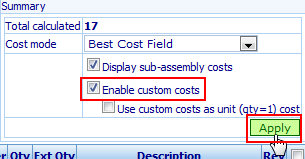
When this option is enabled, a Custom cost field will appear in the results table.

You can then provide a value to be used as the cost for that item.


The report will always use the value in the Custom field when determining the "Best Cost".

|